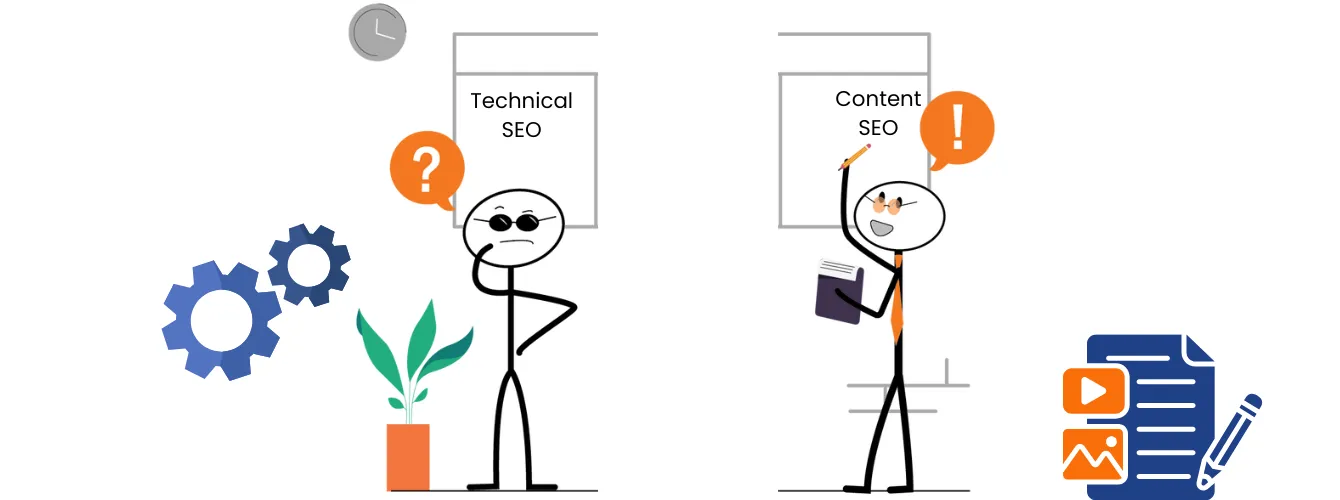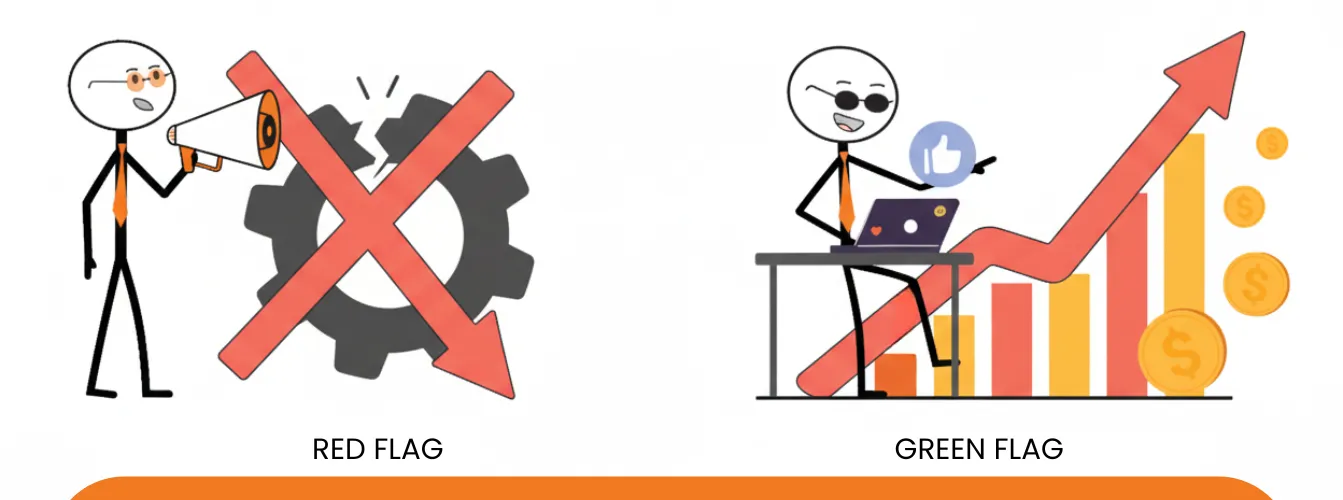Email marketing is a powerful tool for reaching customers. It’s like sending a direct message to people who have shown interest in your products or services. For every dollar you spend on email marketing, you can expect to earn $40 back. That’s a great return on investment!
Many marketers use email to share their content, and it’s a popular and effective way to connect with your audience. But just sending emails isn’t enough. In this blog, we’ll discuss common mistakes that can hurt your email campaigns and offer tips to help you improve your results.
Common Email Marketing Mistakes to Avoid
Even small mistakes can hurt your email marketing. Knowing what to avoid can help you get better results. Here are some common mistakes to watch out for.
Forgot to Welcome
Welcome emails are a great way to make a good first impression. When someone signs up for your email list, sending them a welcome email can make them feel more connected to your brand. In fact, welcome emails have a really high open rate—around 50%!
If you don’t send a welcome email, you might miss out on a chance to connect with new subscribers. This can be a big mistake because it’s like not welcoming a guest to your home. You want to make them feel welcome and excited to be part of your community.
Using Outdated Email Lists
Using old or bought email lists can be a waste of time. These lists often contain outdated information, so your emails might go to the wrong people. This can lead to irrelevant messages and low engagement.
To get better results, use segmentation and personalization. This means dividing your email list into smaller groups based on people’s interests or behaviours. You can then send different emails to each group that are tailored to their specific needs.
When you send targeted emails, people are more likely to open them and engage with your content.
Mobile Optimization
Mobile-friendly emails are essential for today’s readers. Most people check their email on their phones, so it’s important to make sure your emails look good on small screens. If your emails are hard to read or difficult to navigate on mobile devices, people might delete them.
Make sure your emails are responsive to keep people engaged and reduce bounce rates. This means they should adjust their layout and size to fit different screen sizes. When your emails look good on mobile, people are more likely to read them and take action.
Not Customizing the Content
Generic content is boring. If you want people to open and read your emails, you need to make them feel personal and relevant. This means tailoring your content to the specific needs and interests of your audience.
When you send emails that people can relate to, they’re more likely to open them and take action. This can help you build stronger relationships with your customers and increase loyalty.
Sending Emails Too Often
Don’t overwhelm your audience with too many emails. If you send too many, people might get tired of them and unsubscribe. It’s also important to send your emails at the right time. Tuesdays and Wednesdays are the best days for getting people to open their emails, while weekends are usually the worst days for email engagement.
By strategically scheduling your emails, you can get better results. This means sending them at the right time and not sending too many.
Landing in the Spam Box
Overloading your audience with too many emails can cause fatigue, increased unsubscribes, and reduced engagement. This means that if you send too many emails, people might get tired of them, stop subscribing to your list, and be less likely to engage with your content.
To avoid this, it’s important to warm up your email marketing campaigns. This means gradually increasing the number of emails you send over time. This helps your email provider see that your emails are legitimate and not spam.
Additionally, ensuring compliance with best practices can greatly reduce the risk of your emails being flagged as spam. This includes using a reputable email service provider, avoiding spammy words and phrases, and getting your subscribers to confirm their email addresses.
By following these tips, you can improve the deliverability of your emails and ensure that they reach your audience.
Poor Subject Lines
The subject line of your email is very important. Like the headline of a newspaper article, it determines whether people will want to read more. If you write a boring or misleading subject line, people might delete your email without even opening it.
On average, only 27% of people open emails. That means you need to write subject lines that are interesting and honest to get people to click on them. If you can write good subject lines, you can significantly increase the number of people who open your emails.
Overloading with Content
Don’t overload your emails with too much information. Your message can get lost if you try to include too many things in one email. It’s better to keep your emails short, clear and focused on one main goal.
When your emails are concise and focused, people are more likely to pay attention and take action. This can help you achieve your campaign goals, such as getting people to buy a product or sign up for something.
How to Create Email Campaigns That Convert
Although achieving a 100% conversion rate in email marketing may not be realistic, aiming for a solid 10% is a great benchmark. To reach this goal, avoid common mistakes, develop a custom strategy aligned with your objectives, and focus on key elements like clear calls to action, compelling subject lines, personalized content, mobile optimization, A/B testing, and regular monitoring and analysis. These strategies can help you craft email marketing campaigns that drive results.
Creating Mobile-Friendly Emails
With nearly 60% of emails being opened on mobile devices, ensuring your emails are mobile-friendly is essential. Here’s how you can optimize your emails for mobile:
- Keep Subject Lines Short: Aim for 30-35 characters to ensure your subject line is fully displayed on mobile screens.
- Use a Single-Column Layout: This simplifies the design and makes it easier for users to scroll and engage with your content.
- Optimize Image Sizes: Smaller images reduce load times, enhancing the user experience.
- Write Concise Copy: Short, to-the-point content with larger fonts ensures readability on smaller screens.
- Utilize CTAs Instead of Links: Buttons are more clickable than text links, making them more effective on mobile devices.
Personalization and Segmentation
Personalized emails are a cornerstone of effective email marketing. You can create hyper-targeted campaigns that deliver the highest ROI by leveraging relevant data. Segment your email list based on specific audience criteria, ensuring each segment receives content tailored to their needs and interests.
This not only improves engagement but also enhances the overall user experience. Keep your content concise, avoid overwhelming your audience, and include clear, compelling CTAs to drive conversions.
To learn more about creating personalized and targeted content, explore our blog on “Content Marketing Trends“.
Perform A/B Testing
A/B testing is a great way to improve your email campaigns. It involves creating two versions of an email and sending them to different groups of people. By comparing the results, you can see which version performs better. This helps you understand what your audience likes and dislikes so you can make your emails even more effective.
Conclusion
Achieving success in email marketing requires attention to detail and a strategic approach. You can significantly improve your campaign outcomes by avoiding common mistakes like using outdated lists, failing to personalize content, or neglecting mobile optimization. Incorporating personalization, segmentation, and consistent A/B testing will allow you to refine your strategies and maximize engagement. Remember, even a small increase in your conversion rate can substantially impact your overall ROI. With the right approach, your email campaigns can become a powerful tool for driving business growth and building stronger relationships with your audience.







